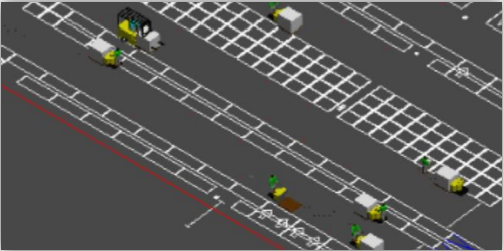
Introduction
Warehouses in today's high-speed supply chain world are not mere storage facilities but dynamic centers of fulfillment where seconds matter and every square foot is important. A top company wanted to streamline operations in one of its high-volume distribution facilities. The primary objective was to validate its current warehouse process flow and work practices and to make strategic decisions on manpower deployment, material handling equipment (MHE), and pallet configurations.
To achieve this, the client partnered with Production Modeling India (PMI) for a detailed warehouse simulation study, aimed at enhancing on-time deliveries while reducing operational inefficiencies.

Client’s Challenge
• Quantify the number of forklifts and manpower required to meet service targets
• Test various picking and replenishment cycles to identify the most efficient process
• Optimize warehouse layout and resource utilization without disrupting current operations

Smart Warehouse Optimization: Validating Pick, Replenishment, and Layout Strategies - A Case Study
PMI’s Approach
PMI initiated the study by building and validating a baseline simulation model using the client’s historical and operational data. The scope included:

Various pick and replenishment strategies were tested to compare performance metrics under different warehouse setups.
• Pallet Size: Tested different configurations to maximize storage and handling efficiency
• MHE Count: Assessed forklift requirements to minimize wait time and movement bottlenecks
• Manpower Variation: Evaluated shifts and worker allocation impact on delivery targets
Findings and Recommendations
• Identified the optimal number of MHEs and manpower needed to meet delivery schedules without excess overhead.
• Recommended an ideal pallet size to improve storage density and retrieval efficiency.
• Suggested a reorder point and replenishment quantity tailored to demand variability.
• Optimized space utilization for different product types to improve accessibility and flow.

Conclusion
With data-backed insights and a dynamic simulation model, PMI empowered the client to make informed decisions that aligned operations with delivery goals—resulting in a leaner, more responsive warehouse system.
